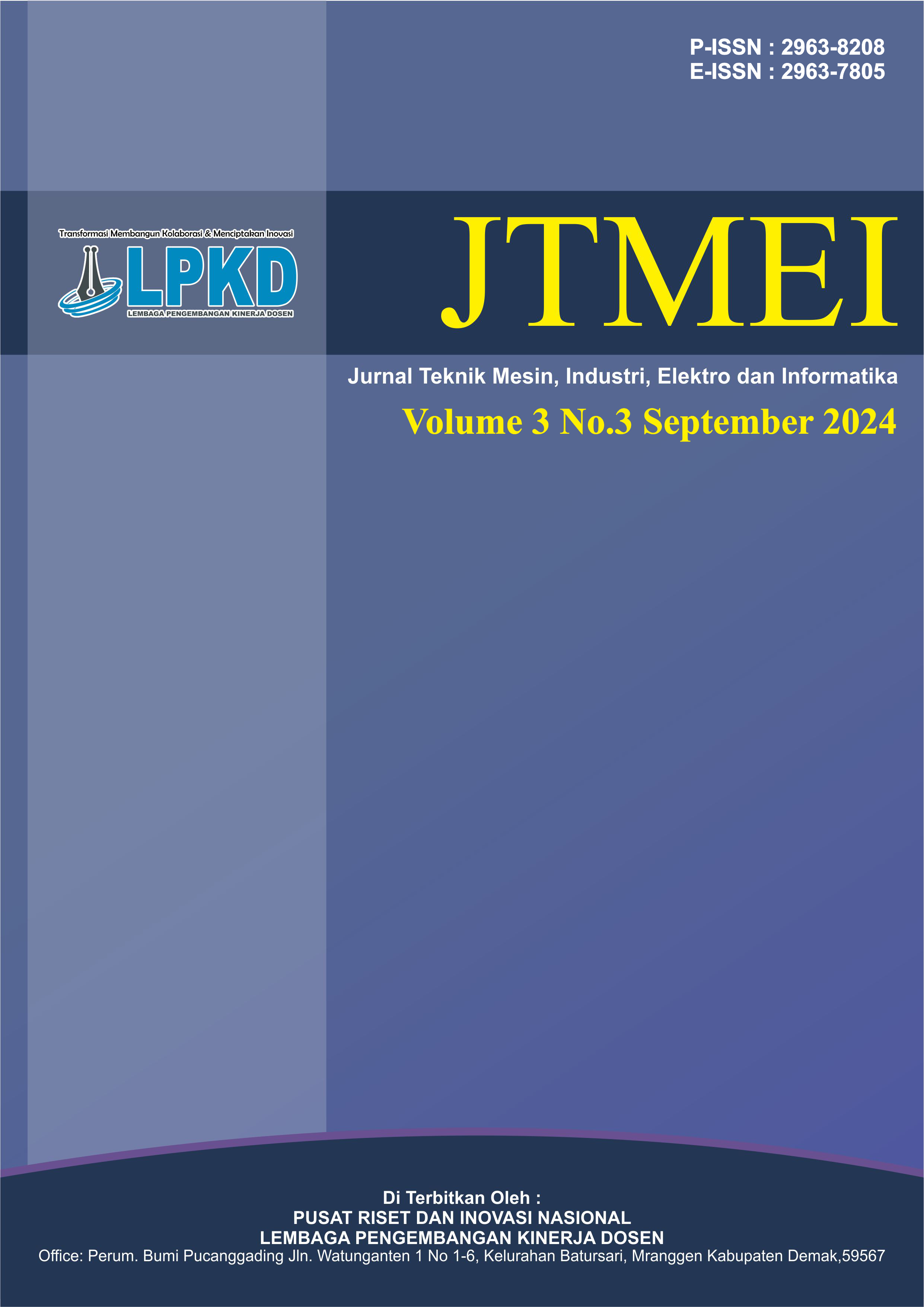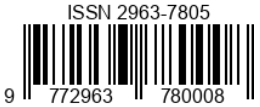Analisa Shock Absorber Sepeda Motor dengan Alat Uji Mekanis
DOI:
https://doi.org/10.55606/jtmei.v3i3.4248Keywords:
deflection, deflection time, Shock absorberAbstract
The use of motorcycles on unstable roads, such as off-road and potholes, demands the importance of a reliable suspension system for riding comfort and safety. Conventional testing of s is often ineffective in accuracy and data recording, so this research proposes the use of an automatic measuring instrument to improve test efficiency and accuracy, allowing users to evaluate deflection in real-time and determine the optimal comfort level. The purpose of this research is to determine the effect of load and brand of motorcycle on deflection value and deflection time. The research method used in this study is the experimental method, which involves a series of trials to collect empirical data related to the characteristics of the . This study uses independent variables in the form of load weight (60 kg, 80 kg, 100 kg) and brand (Aspira, Showa, Kayaba). The measured dependent variables include deflection (mm) and deflection time (s) to evaluate the performance. The results showed that load and brand had a significant effect on deflection and deflection time. Increasing load caused deflection to increase, with Aspira showing deflection of 40-42 mm at 60 kg load and 36-38 mm at 100 kg load. Kayaba had a shorter deflection time of 178.45–180.95 seconds at 100 kg load, compared to Showa's 245.45-275.75 seconds. This shows that Kayaba is more responsive in managing loads, with lower deflection and shorter deflection times than other brands, making it a more effective choice for dealing with varied road conditions.
Downloads
References
Anil, M., Kulkarni, G., & Dnyanendra, R. (2020). Thorough study and comparison on shock absorber. International Journal of Engineering Applied Sciences and Technology.
Bochnig, M. S., et al. (2017). Comparison of the shock absorption capacities of different mouthguards. Dental Traumatology, 33(3), 205–213.
Elyani, N. (2020). Perancangan shock absorber tunggal dengan dua pegas dan satu peredam pada automatic coupler light rail transit (LRT).
Fikri Basuni, I. (2022). Rancangan alat uji shock absorber sepeda motor.
Ghofur, A., & Irawan, B. (2022). Analisa pengatur lenturan sistem manual pada shock absorber sepeda motor (Analysis of manual system deflection controller on motorcycle shock absorber). J-MEEG Journal of Mechanical Engineering, 35.
Hisyam, K. M., & Hamid, A. (2017). Menganalisa pengaruh besar beban lentur terhadap kekuatan fatik poros tembaga. Zona Mesin: Program Studi Teknik Mesin Universitas Batam, 8(2).
Irawan, B., & Putra, A. D. (2021). Desain dan pembuatan smart absorber mekanik beban maksimum 100KgF. Seminar Nasional Rekayasa Teknologi Manufaktur, 1.
Jiregna, I. T., & Sirata, G. (2020). A review of the vehicle suspension system. Journal of Mechanical and Energy Engineering, 4(2), 109–114.
Kusnanto, H., Rizaly, A., & Adhita Pangestu, M. F. (2024). Peningkatan nilai konstanta kekakuan pada shock absorber bekas sepeda motor dengan proses annealing. Jurnal Rekayasa Sistem Engineering dan Manufaktur, 2(1).
Li, Z., et al. (2013). Energy-harvesting with a mechanical motion rectifier. Smart Materials and Structures, 22(2).
Momon Sudarma. (2013). Profesi guru: Dipuji, dikritisi, dan dicaci. Rajawali Pers.
Murtilaksono, A., Adiwena, M., Rahmadhani, E., Zhafira, D. N., Subianti, A. Y., Fatmawati, F., & Sari, N. K. (2024). Penerapan teknologi formulasi herbisida nabati berbahan gulma lokal di kelompok tani Bina Warga untuk mendukung ketahanan pangan di Kota Tarakan: Application of vegetable herbicide formulation technology made from local weeds in community development farmer groups to support food security in Tarakan City. PengabdianMu: Jurnal Ilmiah Pengabdian kepada Masyarakat, 9(3), 463–474.
Noerdien, A., Rubiono, G., & Qiram, I. (2018). Pengaruh studi karakteristik getaran shock breaker pada sepeda motor matic 110 CC.
Polach, P., & Hajžman, M. (2010). Design of the hydraulic characteristics using relative springs deflections at general excitation of the bus wheels. Applied and Computational Mechanics.
Rahmadianto, F., & Karanglo Km, J. (2020). Analisa pengaruh variasi displacement shock absorber kendaraan bermotor terhadap respon getaran. Journal Mechanical and Manufacture Technology, 1(1).
Rana, A. J. (2015a). Pengaruh viskositas berbagai minyak sawit untuk oli peredam shock absorber sepeda motor.
Rana, A. J. (2015b). Pengaruh viskositas berbagai minyak sawit untuk oli peredam shock absorber sepeda motor.
Singh, W. S., & Srilatha, N. (2018). Design and analysis of shock absorber: A review. In Materials Today: Proceedings. Elsevier Ltd, 4832–4837. https://doi.org/10.1016/j.matpr.2017.12.058
Susanti, S., & Sihono, S. (2017). Penentuan konstanta pegas dengan variasi jumlah lilitan dari beberapa segmen pegas tersusun seri menggunakan sebuah pegas tunggal. In Prosiding SNIPS 2017, 223–234.
Wahid, N. A. (2017). Modeling and analysis of the effect of oil and orifice diameter variations on damping force of shock absorber and dynamic response of Yamaha Jupiter Z 2008.
Wasiwitono, U. (2016). Final project-TM 141585: Modelling of vehicle suspension system using SolidWorks.
Wijekularathna, D. K., Manage, A. B. W., & Scariano, S. M. (2020). Power analysis of several normality tests: A Monte Carlo simulation study. Communications in Statistics: Simulation and Computation, 51(3), 757–773.
Xu, T., et al. (2015). Design and analysis of a with variable moment of inertia for passive vehicle suspensions. Journal of Sound and Vibration, 355, 66–85.
Zou, J., et al. (2019). Modelling and ride analysis of a hydraulic interconnected suspension based on the hydraulic energy regenerative system. Mechanical Systems and Signal Processing, 127, 345–369.
Downloads
Published
How to Cite
Issue
Section
License
Copyright (c) 2024 Jurnal Teknik Mesin, Industri, Elektro dan Informatika

This work is licensed under a Creative Commons Attribution-ShareAlike 4.0 International License.








